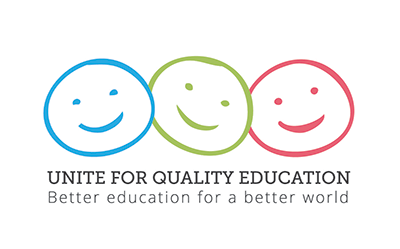Quality education is a basic right.
It is one of the most fundamental ways people can achieve well-being. It lifts lifetime earnings as well as how much a person can engage with and contribute to society. Quality education positively affects health, and lowers family size and fertility rates. Availability of workers with the right skills is one of the key determinants of success for any business—and of capable and professional public bureaucracies and services. Investing in education brings individuals and societies enormous advantages, socially, environmentally and economically. But to realize these benefits, children and adolescents must have access to education and learn from it.
Across the world, investment in education clearly benefits individuals and societies. A study of 98 countries found that each additional year of education results in, on average, a 10 per cent increase in lifetime earnings – a huge impact on an individual’s opportunities and livelihood. In countries emerging from conflict, giving children who couldn’t attend school a second chance is one way to rebuild individual capabilities and move into national recovery.
However, globally, there is an education, learning and skills crisis. Some 60 million primary school-age children and 71 million adolescents do not attend school. Even in countries where overall enrollment is high, significant numbers of students leave school early. On average, 14 per cent of young people in the European Union reach no further than lower secondary education. Among the world’s 650 million children of primary school age, 130 million are not learning the basics of reading, writing and arithmetic. A recent study of 28 countries found that more than one out of every three students (23 million primary school children) could not read or do basic math after multiple years of schooling.
We believe it important to target learning result, to make sure every child performs up to a global minimum standard upon completing primary education. To do this, many countries have found that pre-primary education, getting children ready to learn, is also needed, so we have added a target on that.
All around the world, we are nearing universal primary school enrollment, although 28 million children in countries emerging from conflict are still not in school. In more than 20 countries, at least one in five children has never even been to school. We need to ensure all children, regardless of circumstance, are able to enroll and complete a full course of primary and lower secondary education and, in most cases, meet minimum learning standards.
Of course, education is about far more than basic literacy and numeracy. While the targets are about access to school and learning, education’s purposes are wider. As set out in the Convention on the Rights of the Child, education enables children to realize their talents and full potential, earn respect for human rights and prepares them for adulthood. Education should also encourage creative thinking, teamwork and problem solving. It can also lead people to learn to appreciate natural resources, become aware of the importance of sustainable consumption and production and climate change, and gain an understanding of sexual and reproductive health. Education supplies young people with skills for life, work and earning a livelihood.
Teachers are often early mentors who inspire children to advance. The quality of education in all countries depends on having a sufficient number of inspired teachers, well-trained and possessing strong subject-area knowledge.
Equity must be a core principle of education. Educational disparities persist among and within countries. In many countries where average enrollment rates have risen, the gaps between, for example, rural girls from a minority community and urban boys from the majority group are vast. Some countries have made significant gains in the last decade in reducing disparities based on disability, ethnicity, language, being a religious minority and being displaced.
As children move on to higher levels of education the education gap still remains enormous. Many children who finish primary school do not go on to secondary school. They should, and we have included a target to reflect this.
The hindrances to education, and the most effective solutions, will vary by country. But the commitment to learning must be constant and unwavering
